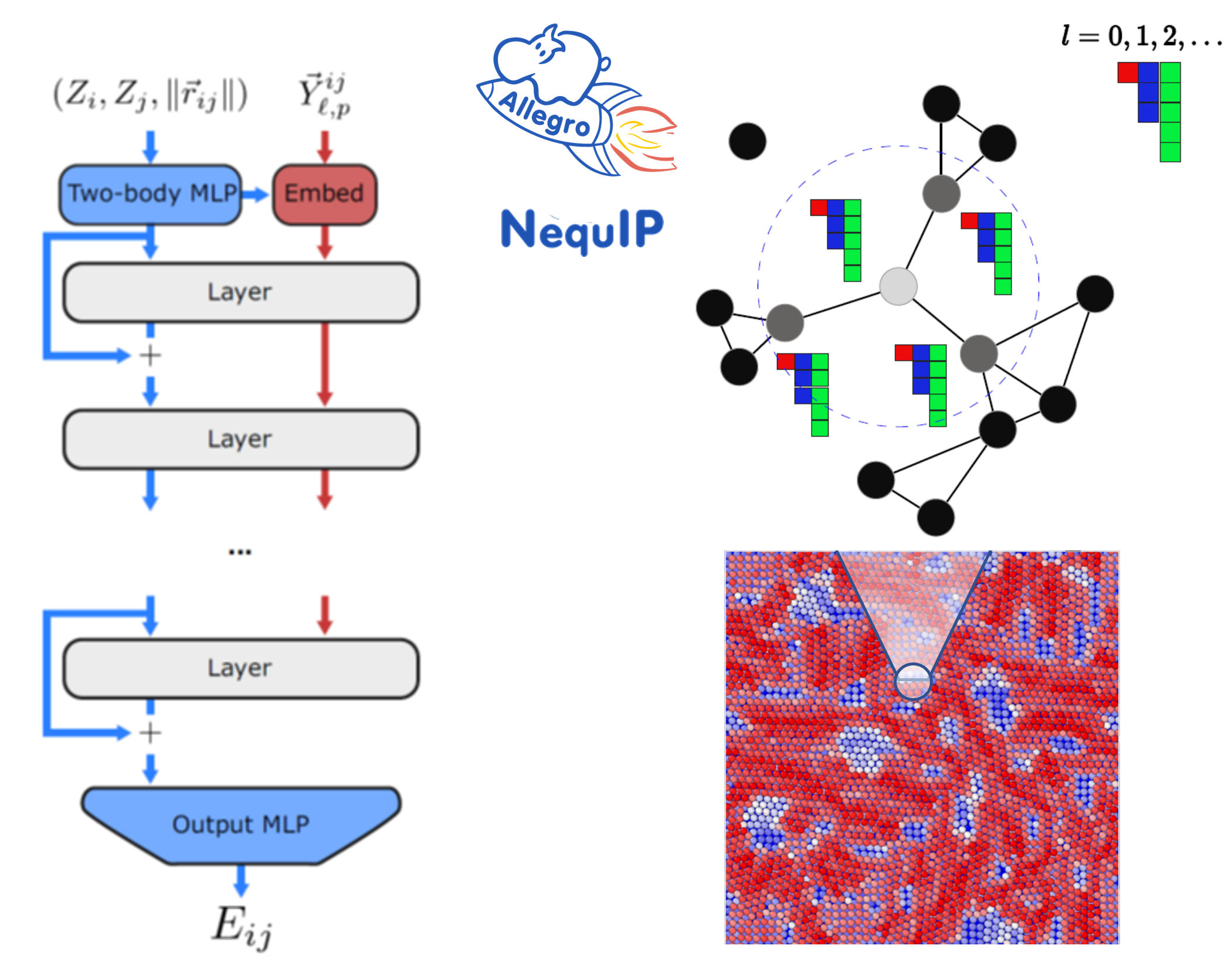Equivariant Force Field Models for Molecular Dynamics of Complex and Soft Materials

(Right) Tensor equivariant graph network representation of atomic local environments in metallic materials.
A team at the Harvard MRSEC led by Kozinsky has developed a new class of machine learning models for capturing quantum mechanical interatomic interactions. These “force field” models are based on deep equivariant neural network representations of the atomistic geometry that satisfy exact symmetries of 3D space. The NequIP-Allegro model achieved higher accuracy and training data efficiency than any machine learning model to date. At the same time, it allows parallel molecular dynamics simulations to describe tens of millions of atoms, while maintaining near-quantum accuracy. Achieving these requirements opens the possibility to simulate long-time dynamics of nucleation of phase transitions in complex materials, such as metallic alloys.
Publications:
Batzner, S., A. Musaelian, L. Sun, M. Geiger, J.P. Mailoa, M. Kornbluth, N. Molinari, T.E. Smidt, and B. Kozinsky,"E(3)-equivariant graph neural networks for data-efficient and accurate interatomic potentials," Nature Communications 13 (1) 2453-11 (2022) ![]()
![]()
Musaelian, A., S. Batzner, A. Johansson, L. Sun, C.J. Owen, M. Kornbluth, and B. Kozinsky, "Learning local equivariant representations for large-scale atomistic dynamics," Nature Communications 14 (579), 1-15 (2023) ![]()
![]()
Boris Kozinsky (Material Science)
2022-2023 Harvard MRSEC (DMR-2011754)
